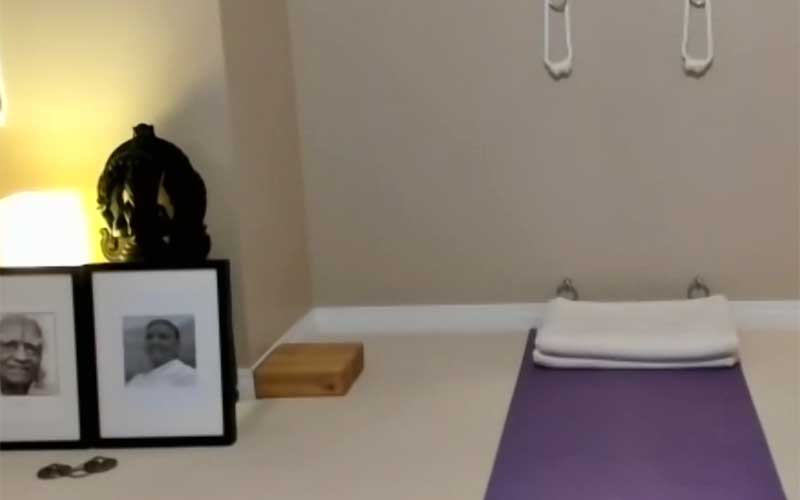Taking your Practice Home
by Bridget Donald
This article first appeared in our association’s newsletter published January 2003.
New Year’s Resolution: will rise at 5:30 every morning and do pranayama, sitting, and asana practice before carrying on into rest of day as totally serene and collected individual.
Does this sound familiar?
If so, you might have already encountered a bit of a gap between your resolution and the reality of facing the mat each day. Few yoga students would question the importance of a regular practice, but the how’s of the matter are a little nebulous. While the best approach varies according to the individual, the following ideas might offer some encouragement. Certainly, they’re a help to me as I renew my efforts toward abhyasa, or the “long, uninterrupted, alert practice” that Patañjali’s Yoga Sutra I: 14 sets out as the way to Yoga.
1. Take a positive approach.
This seems like a simple idea, but it is foundational to a continuing practice. If you give yourself credit for what you have managed in your practice and dispense with self-recriminations, staying on track (or getting back on it) will seem more inviting. In the niyamas, the individual precepts that form part of the basis of a yoga practice, “delight in the self” (santosha) comes before “the desire to struggle for perfection” (tapas). The two work together and are equally important, but it’s encouraging to remember that the underpinnings of discipline are a sense of joy and self-acceptance.
2. Give your practice its due.
Make space – both temporal and physical – for your practice, and then insist upon it unapologe1ically. When competing demands make taking time for yoga seem impractical, or even selfish, remember that your practice can give you the energy, courage and insight you need to meet those demands gracefully. As senior Iyengar teacher Aadil Palkhivala put it,
In yoga, we learn to bring our bodies and minds into balance so that we can be more useful in the world, more productive in our work, and more nurturing to those we love.
3. Harness the power of familiarity: Make Yoga a habit
If we accept that we are creatures of habit, strongly drawn to what we already know and recognize, then we can take heart in the knowledge our yoga practice will, with time and perseverance, become a compelling force. Practicing at the same time and in the same place each day will provide reinforcement. This is not to suggest that resistance to practice will disappear, but you will be able to draw strength from recalling all the other times that you managed to overcome that resistance.
4. Set modest and manageable goals.
When it comes to the amount of time you set aside for a day’s practice, or the number of poses you intend to cover, it helps to plan for a little less than what you might think is reasonable. The Iyengars have said that you will derive more benefit from brief daily sessions than a single, longer weekly one. Also, breaking up your daily practice into morning and evening sessions might make the time commitment seem more manageable – a helpful piece of advice I remember from the teachers at the Victoria Yoga Centre.

5. Establish balance in your practice.
Following a preset practice can make it easier to get to the mat each day. A regular program
that spans the categories of poses (standing, sitting, forward bends, backbends, inversions) over the period of a week will help to establish balance. Vancouver teacher Louie Ettling suggests that if you can manage just one session in addition to your weekly class, do some of the poses that weren’t covered in the class to round out your practice.
6. Shake things up a bit
Varying the routine to suit your changing needs will help keep things fresh, and recognizing when you need to tailor the program is part of svadhyaya, or self study. I like to include something in my practice that l can’t quite do yet but can safely attempt. In the gap between thinking and doing, I feel that the mind finds room to expand. As Sri Aurobindo said, “The sense of impossibility is the beginning of all possibilities.” I also like to include at least one pose that is easy enough and a pleasure to do.
7. Stay connected to your yoga community
While practice requires an individual commitment and a fair bit of solitude, attending a regular class or meeting with others for a practice helps with motivation by providing the necessary guidance and a sense of community.
